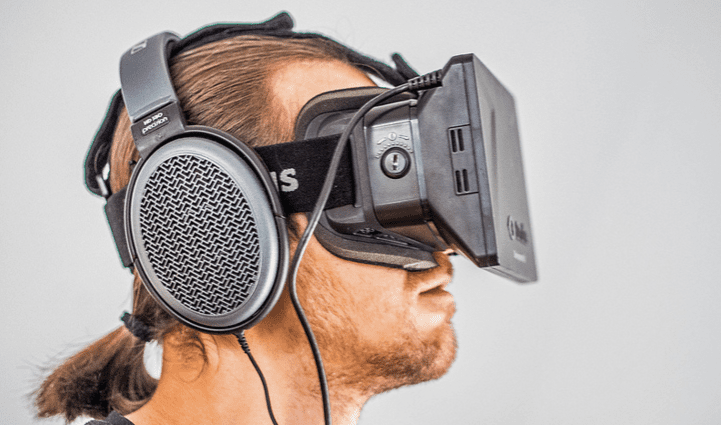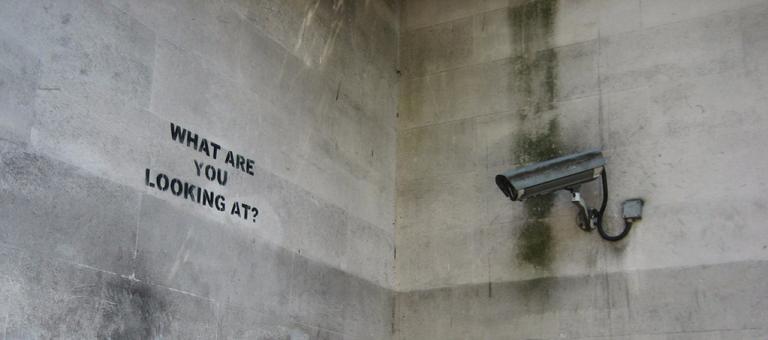NSFW
The Internet is weird. It is home, not just to the ability to order a wife, instagram yourself beheading Shia militants, or preach the Gospel, but also to several millions of images of hyper-sexualized childhood cartoon characters, of whom, for no discernible reason, Sonic the Hedgehog reigns supreme.
Why? Seriously, why do we add penises to Pokemon and extramarital acts to Mario? Why do we describe (with all the grammatical fluidity of a drunken 13-year-old with dislocated thumbs) fan-fictional accounts of Harry and Malfoy’s gay sex life, extended torture-porn parties between Twilight characters, and [insert any BBC show here] orgies?
The easy answer is teenage horniness, but given that these same words are used to shrug off high-school rape, I think we should stop taking arousal as a sufficient justification for human behavior and ask the deeper question: What about arousal so readily links it to fiction, to the point that it is almost a law that, if it had a beloved childhood following, it has a pornographic remix (and a community of anonymous partakers somewhere in the dredges of teh interwebz)?
We’ll begin our amateur sleuthing with an obvious point: The characters of fiction, and especially childhood fiction, involve us in a world. The children of the 90’s did not play Pokemon — they lived and breathed it. When I recall The Chronicles of Narnia I am struck, not with a memory of the plot or any particular segment of text, but with a memory of being-there. I didn’t just read — I pitched my tent in the Narnia, Hogwarts, Middle-Earth, Vermillion City, and Tatooine. I lived there. I got lost there. Mine was a genuine, emotional participation in a fictional world.

Now there are very few adults who do not bemoan, at some point or another, that they “can’t read anymore.” I’m a fiend for a novel, but I can’t help but agree — I have never been able to so participate in a fictional world as when I was a child. I lack wonder. I am withdrawn into an dull, de-sensitized affectivity. I have, as the merit badge of my generation, a hypertrophied heart — an affective center that cannot respond to the world with meaningful, powerful emotions. Obviously, this disappointing banishment from Eden is accentuated by a culture of distraction. We are educated to avoid any deep participation in a work of art or piece of text by websites that make money appealing to our most unimaginative drives for novelty and alarm. But it is precisely in the sadness of a Narnia lost that arousal makes its appeal.
Arousal provides a means of what the novelist Walker Percy calls “re-entry” — a means of finally participating in an (emotionally) lost world. In the moment of sexual arousal, we manage to ape the experience of the heart with the experience of our loins. We establish an undeniable communion and relation to the object of our arousal — of course it effects me again, and of course I am engaged and involved with it. The reaction of my body is evidence of the fact. Eden has been restored. I am once again in some sort of communion with the marvelous worlds of my childhood. I am once again pierced and affected by the stories, characters, and adventures that so bundled me in wonder, joy and the obsessive collection of Pokemon. In a real, empirically verifiable way — I can feel them. They move me.
Thus, in a fallen world of withdrawn affectivity, arousal provides a sort of salvation. We achieve a relation to our lost worlds on the lowest levels of stimulus-response as shoddy means of making up for the relation we can no longer attain in the deepest levels of our person — our imagination, our heart. This is hardly a novel concept. It’s an obvious temptation of any sexual activity, to ape the response of the heart by the easier response of the aroused body. Thus, in frustration over a felt lack of love, we attempt to “solve it with sex,” to “return to” a lost relationship via arousal — to prove love by means of an erection.

Now, there is a way in which Virtual Reality is “already porn.” I do not simply mean that the monetary interest of the pornography industry whips the technology forward, or that it takes the average humanoid about 4 seconds, upon being told the vision of the Oculus Rift, to imagine its pornographic possibilities. Whether in its immersive, 3D, 360-experience or, more obviously, in its connection of the body to stimulating devices, the raison d’etre of Virtual Reality is this — to achieve the feeling of genuine participation in a fictional world by means of bodily stimulus.
Like poor Sonic the Hedgehog, Virtual Reality turns a fiction into a stimulant. The fictional world impugns directly on our senses without the mediation of the heart or the imagination. It touches us. We have, in our bodily reactions, the empirical evidence that we are “in” the world — participating in it, lost in it.
But just as the pornographied childhood character is a poor replacement for the receptivity of the childlike heart, so Virtual Reality’s “skipping” over the active participation of the deepest levels of the person will fail to attain the genuine sense of wonder that only the activity of the deepest levels of the person can attain.
There is little doubt that those who enter into its unfolding worlds do so with the bright hope that, within such fantasies, we will be returned to that sense of awe, magic, and marvel that seems so heart-breakingly absent from a greying world. But the immediacy with which the worlds of virtual reality become maps for porn, the speed with which avatar-based chatrooms become grounds for goggled, ear-plugged masturbation, and the near inevitability with which every improvement in virtual “experience” is pushed by and used for virtual pornography — all this shows that the dream fails. We run to the pornographic to save us — withdrawn, orbiting human beings seeking re-entry. Dunkey satirized all this rather brilliantly in his review of Second Life (still NSFW):
Virtual Reality fails, as does every attempt to achieve by technology the happiness only ever grasped by virtue, deep participation in reality — the full person in communion with her world. After an initial surge of novelty, we will drag our boredom and despair into the most marvelous of digital maps, and there, disappointed humans sucking the hope from a robotic paradise, we will do what we always do — draw a penis on it. Figure out a way to be aroused by it. Ape in the stimulus-response of the body the being-effected we fail to attain in our stony hearts. Virtual Reality is fascinating in that it has begun as pornography — already turning to sexual arousal to make up for itself, already declaring itself one more failed attempt at participation and communion in a wonderful world.
This is Part 1 of a series. In case it’s not obvious, I’d like to fight the inevitable rise of Virtual Reality. Everyone will hate me, and Virtual Reality will rise nonetheless, but I will have brief, fleeting, and elusive feelings of joy granted to those who stand up to be crushed by inevitable behemoths like global capitalism and very large tidal waves. What is this planetary existence for, if not to be the stegosaurus who rears up and defies the asteroid that kills him: “You may crush me, but I know I am being crushed by you, and I defy the fact, and this makes me, humble dinosaur, infinitely more powerful than you, dumb asteroid.”















